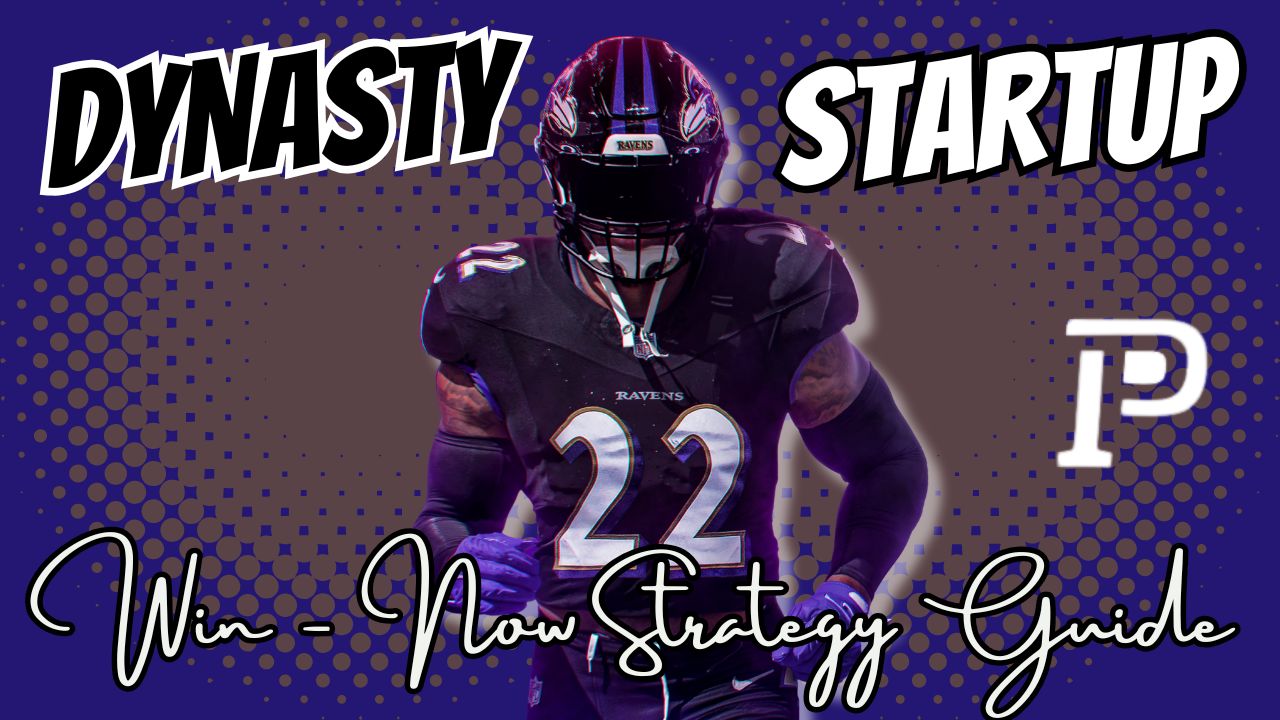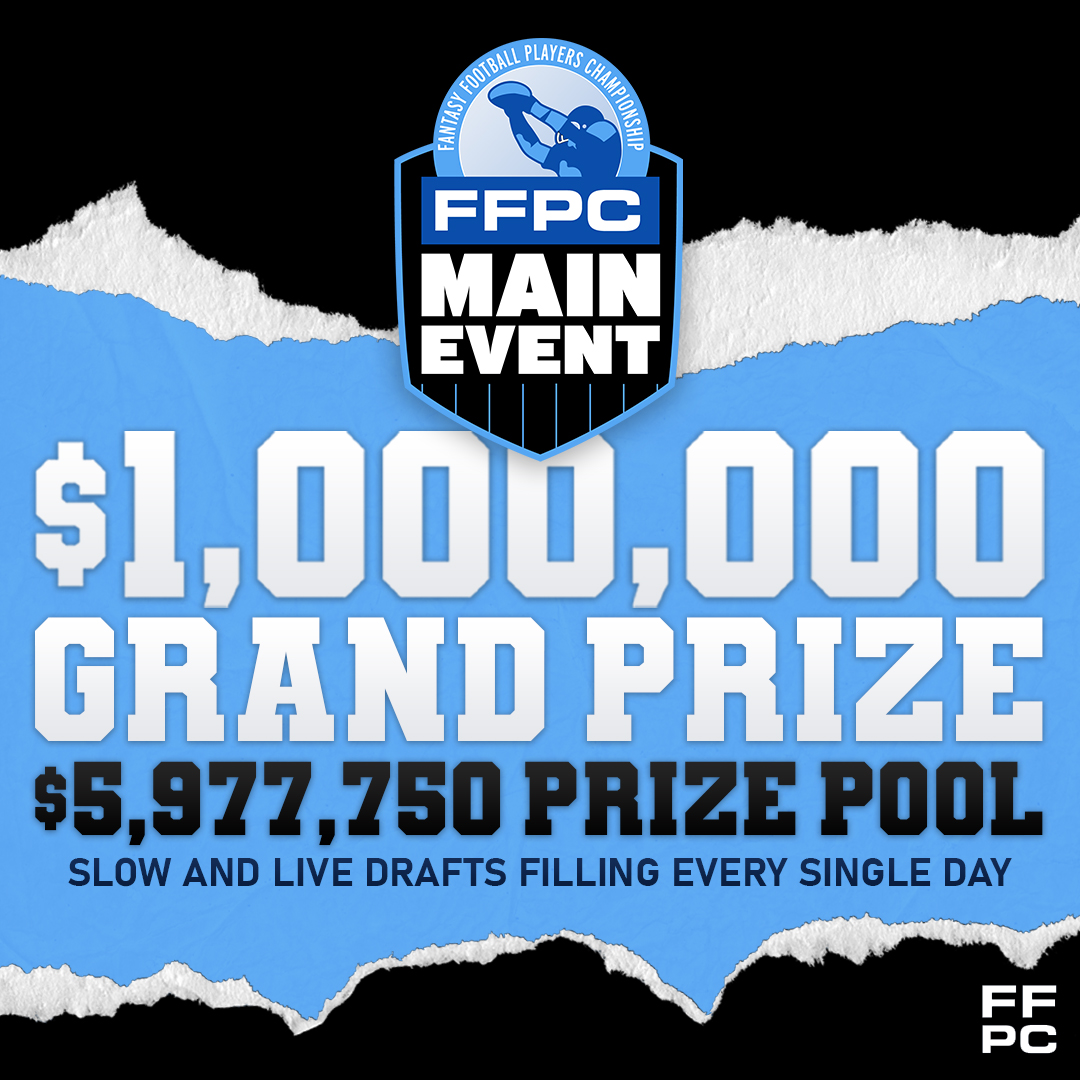PlayerProfiler is home to award-winning dynasty rankings and tools. Our Dynasty Deluxe package includes complete Dynasty Rankings, Rookie Rankings, Trade Analyzer, Draft Planner, Mock Drafts, and more. Check it out. Aaron St. Denis presents Dynasty Football Startup Strategy (Win-Now). This three-part series will discuss tips and tricks for various draft strategies.
Bias Alert!!
This startup draft approach is easily my favorite. When I joined my first dynasty league, I was like everyone else who had dreams of drafting all young, high-upside players who would form a juggernaut that would win multiple championships in a row. Years later I now realize that this isn’t as likely to happen as you would expect simply due to the increased cost of youth in dynasty leagues.
I have had undefeated seasons in dynasty, three-peats, and outright juggernauts. All of these teams had one thing in common: They were built as win-now teams that continued to produce well beyond their years. Sure, at some point, the Travis Kelce‘s and Christian McCaffrey‘s of the league are going to run head-first off the age cliff. In the meantime, the run is fulfilling.
One Opening Thought
Regardless of which dynasty build you choose to go with, there is one rule that should be adhered to regardless. That rule is to Draft for value and trade for need. Many times, managers can panic in a startup draft and overpay for a player because they are lacking in this position. This is commonly seen with tight ends and quarterbacks (in superflex). Instead of falling into this trap, simply draft the best player available. After the draft, fill the holes in your roster later from a position of immense strength.
Dynasty Startup Strategy (Win-Now)
Target Proven Veterans
This strategy is so easy to pull off because of the difference in cost between veterans and younger players. The value of having a young player who can produce for many years to come is obvious. The issue is overvaluing the upside and future. The NFL changes drastically every week, so how can we be expected to project whose value will be sustained for many years? I’ve seen many instances where one manager traded away a veteran for a young player in the same position, and the veteran outlasted the youngster. There is just no telling what the future holds.
This is never more evident than in a dynasty startup draft. While all the young receivers and running backs are flying off the board in the first three rounds, veterans who will produce at the same level are available for later rounds. Last year was a prime example and the first undefeated season of my fantasy career. A dynasty startup draft saw me leave with Derrick Henry, Alvin Kamara, James Conner, Josh Jacobs, and Joe Mixon all on one roster. While this didn’t appear exciting at the time of the draft, it quickly turned into an unbeatable team that coasted into a fantasy championship. To make things even better, entering this off-season, all of those players have either held their value or gone up slightly.
The thing to take away here is that it’s possible to draft a team of undervalued veterans and win a championship immediately and then decide if you want to make another run at a title or sell off the veterans for draft capital. Regardless of what you choose to do, you get to do it with a trophy on your bookshelf.
Load Up on Running Backs
As mentioned above, this is the most profitable group of veterans. Aging running backs are viewed as ticking time bombs and come significantly cheaper in dynasty drafts than they do in redraft leagues. Henry may go in the second round in a redraft league but he can easily be had in the sixth round of a dynasty league.
Dynasty startup drafts can have you leaving the draft with a starting lineup full of Hall-of-Fame-level running backs. This approach is not without its risks. A team comprised mostly of aging veterans at the game’s most fragile position leaves you in constant fear of a serious injury, but that is true for most team builds.
A great co-strategy to employ in this build is to pair those aging running backs in the middle rounds with rookie running backs in the late rounds. This is an even better strategy if those late-round running backs are the handcuffs to your veterans. At any point, these rookies can see a major spike in value and can turn your “Over the Hill” squad into a team that has more longevity than you expected.
Pairing rookie running backs (especially your handcuffs) with veteran running backs can add years to your window to contend and give you loads of added security and protection in a league full of injury landmines.
Secure An Elite Quarterback (Superflex Leagues)
This value of an elite quarterback cannot be understated in a Superflex league. A roster loaded at receiver, running back, and tight end can quickly become a non-playoff team if you don’t have reliable quarterback play. This can be a tricky thing to accomplish if you get a late pick in your startup draft. Deciding how many quarterbacks you think are elite is the most important part. If you see six quarterbacks as elite, then you should be using your first-round pick to select one of them if they are available. Whether you select that elite quarterback at 6th overall or 12th overall doesn’t matter. Just secure yourself an elite quarterback!
Where it gets difficult is when the quarterbacks that you view as elite are gone by the time you are on the clock. Feeling the pressure and over-drafting a middling quarterback is a common occurrence for managers with late first-round picks, but don’t fall into the trap. What you need to do instead is to take the value and secure the elite position players in those spots and then double down on quarterbacks on the low end of the QB1 or high end of the QB2 range.
Secure one elite QB1 as well as a solid QB2 to pair together is optimal, but will often cost significant draft capital. Whether you pair a QB1 with a QB2 in the early rounds or two QB2s in the early to middle rounds, the key is to shore up the position. From there, you should be taking shots later on in the draft with young quarterbacks who hold significant upside.
This is the quickest way to win or lose in a Superflex league, but it is far less important in a 1QB league.
Leverage Future Draft Capital
At some point, your leaguemates will reach a stage where they realize the players they desperately want have already been drafted, so they start picking the best available player on the board. This enthusiasm can fade by the third or fourth round in some leagues or as late as the eighth round in other leagues. The key is to find the point in the draft where you value a player on the board significantly more than your league mates.
The most profitable way to exploit this is to flip your future first and second-round picks for startup picks in the third, fourth, and fifth rounds. A vast majority of the time, these fifth-round startup players will be far more productive than the first-round rookie pick. This strategy can be used on the fly to fill holes left by draft slots. If you missed on a quarterback at the end of the first round, acquire an extra third-round pick and double up on high-end QB2s. If you drafted quarterbacks early and missed on a receiver or running back, this is a great chance to fill those holes with reliable options at the position.
Prioritize Talent Over Depth
Fantasy football is an extremely volatile beast. This is why many managers choose to hedge their bets. Most managers don’t have the stomach to live on the edge and roll out a squad with little on the bench, but often, this is the most profitable approach.
Sure, you need a few bench players to cover inevitable injuries and, more importantly, to fill bye weeks, but people often overvalue depth. Why spread out your talent across your entire roster so you can watch half of it sit on your bench? The best approach is to have as much high-end talent as possible in your starting lineup and deal with depth issues as they come. You may lose a starting running back and have no backup, but if you are smart with your F.A.A.B. budget, you can often scoop up his handcuff off the waiver wire.
If the worst-case scenario happens, you should be able to trade some of your high-end talent for multiple players to fill injuries. It’s easier to trade down than to trade up, so keep that in mind. Once bye weeks have concluded and you no longer have a pressing need for bench depth, a great approach can be to consolidate this bench talent to desperate managers. Trading two or three bench players to someone for a proven starter is invaluable.
Exploit Rookie Fever
This strategy works best when used right after the NFL Draft or during your startup draft or rookie draft. The shiny new toys and the fear of missing out cause the rookie hype to reach insane levels. Take this hype and turn those draft picks into proven assets.
It has always baffled me how many fantasy managers are willing to pass on a proven WR2 or RB2 for a second-round rookie pick because the pick has “youth” and “upside”. Take the proven asset and let someone else deal with the mystery box.
Consider this. First-round rookie picks typically have a hit rate of 40-50%. That means roughly half of those “can’t miss” first-rounders are going to be busted. For second-round rookie picks, that success rate drops to 20%. That means two or three of the 12 players in round two are likely to be solid fantasy assets. By the third round of rookie drafts, you might as well be throwing darts blindfolded.
So, as fun as it may be to hold those rookie lottery tickets, realize that it’s exactly that, a lottery. Take the guaranteed player instead of hoping you beat the odds with a rookie pick. We’ve seen two quarterbacks in recent memory who have been the first overall pick in the NFL Draft and failed to even finish as a top-three quarterback among rookies. Caleb Williams and Bryce Young serve to show you just how uncertain draft picks are.
One Final Thought
As stated in each edition in this series. An honest self-evaluation of your team is the most important aspect of dynasty football. It’s never more important than in a win-now build. Knowing when to push all in and when to shift gears is critical. Recognizing the signs of obvious decline is a must. Remember, when a veteran over the age of 30 starts to show you signs that they are declining, believe them. Get out immediately before the floor falls out.
For a deeper look into the NFL Draft, check out Cody Carpentier’s Two-Round Mock Draft, which is available now!
Aaron St. Denis is a fantasy football contributor for PlayerProfiler. Find him on Twitter @FFMadScientist for more fantasy content or to ask questions.








